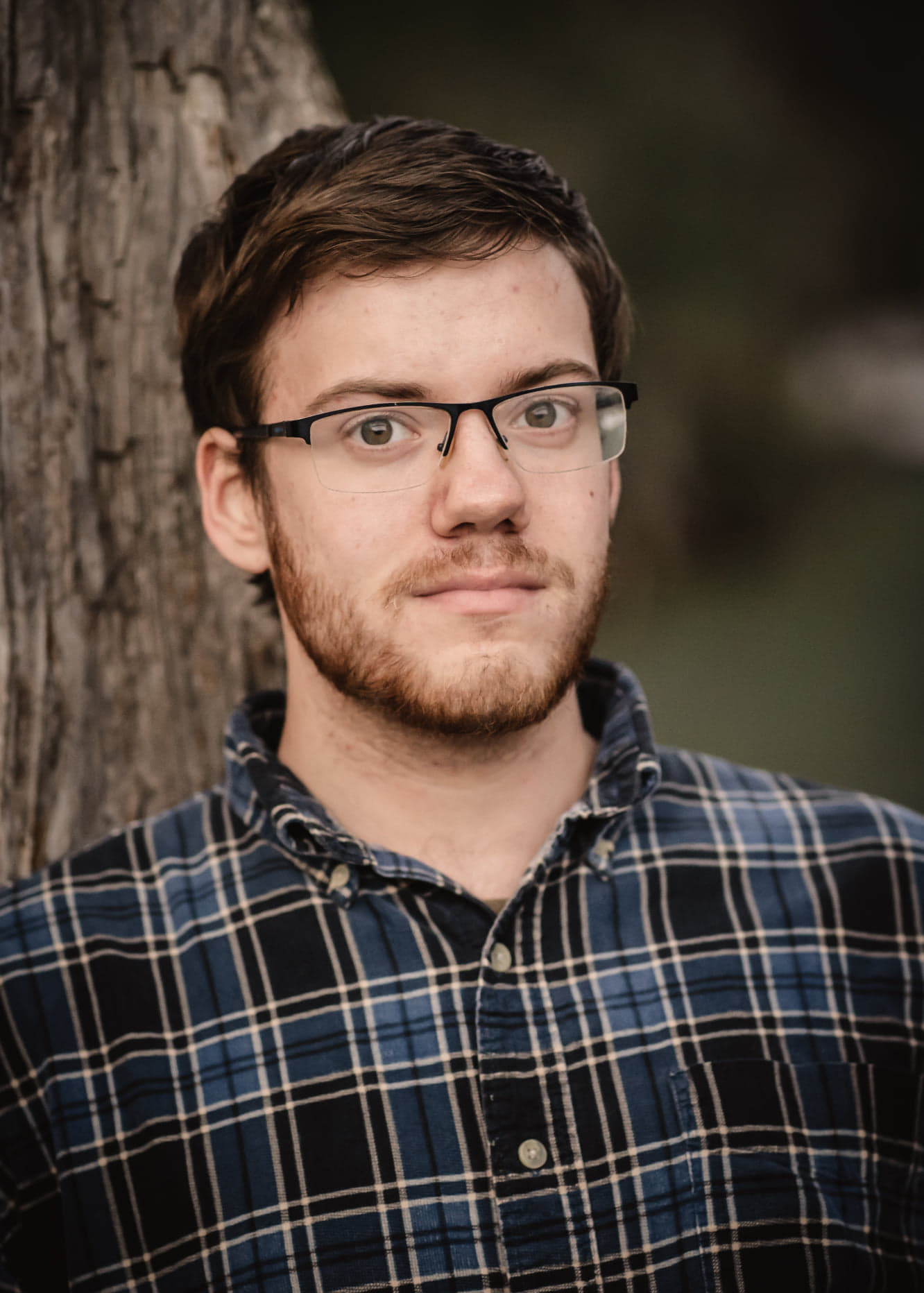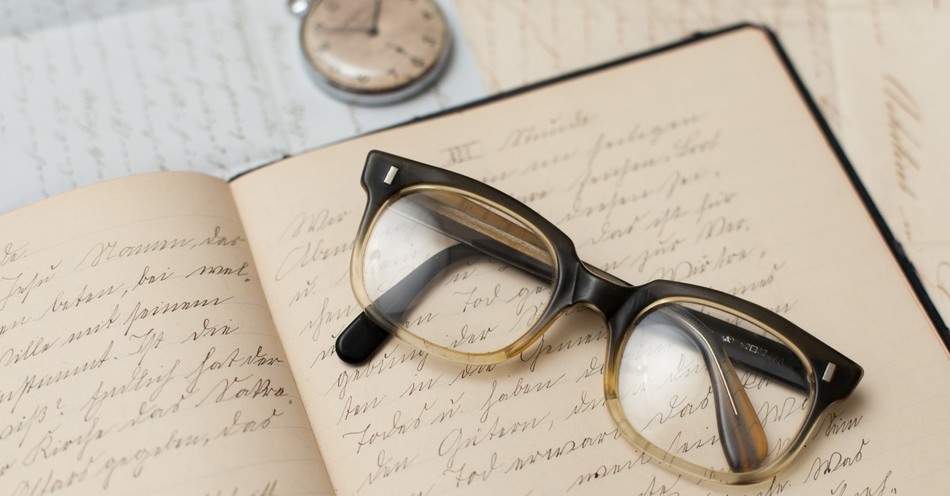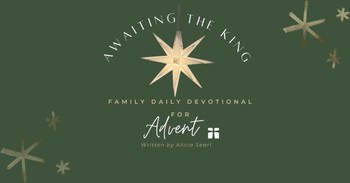Ask most people who their favorite Inkling is, and they’ll probably mention C.S. Lewis, J.R.R. Tolkien, or perhaps Charles Williams. While hundreds of books have been written about Lewis or Tolkien, almost nothing has been written about Dr. Robert Emlyn Havard—or “Humphrey,” as many friends knew him. The nickname apparently came from an Inklings meeting where Hugo Dyson called him “Humphrey” by mistake, and the name stuck.
The fact not many people remember him is a shame because he played a larger role in the Inklings than many more famous members did. Diana Glyer notes in The Company They Keep that Havard became one of the most regular Inklings attendees. As a result, Havard gave feedback on many of the Inklings’ projects—more than some better-known members, like Owen Barfield, who only attended occasionally.
On paper, Havard seems a misfit in the Inklings. He lived in Oxford but didn’t teach at any Oxford college; he made his living as a medical doctor. He listened to others share their work, but very little is known about his own work. Dr. Bruce Charlton refers to Havard as “the only non-literary member of the Inklings.” When asked about his work in a 1984 interview with Lyle Dorsett, Harvard replied, “I have never written anything very much.”
It’s tempting to take Havard’s statement at face value. In fact, he wrote more than medical research. He also contributed to and informed other Inklings’ work in under-discussed ways.
Biographical Facts about Humphrey Havard
1. Havard was born on March 15, 1901, in South Kyme, Lincolnshire. Little is known about his family, although his son, Colin, mentioned an important detail in a 2011 interview:
“My father had not the easiest of relationships with his father. My grandfather had been a farmer, and he became a policeman, and then later in life he found that he had the calling to be an Anglican priest. There was something about the policeman in his style of Christianity, and my father found him very judgmental, and they butted heads a good deal.”
2. Havard began his medical studies in the 1920s at Oxford’s Keeble College, followed by Cambridge’s Caius College and Guy’s Hospital in London.
Havard made his mark as a medical researcher before completing his studies. In 1926, still completing his Cambridge studies, Havard published his first medical paper, co-written with George Adam Reay and released in the Journal of Physiology: “The influence of exercise on the inorganic phosphates in the blood and urine.” Bruce G. Charlton says the paper appears to be one of that year’s most-cited Journal of Physiology articles.
3. In 1931, Havard converted to Roman Catholicism. Colin Havard explains his father reached this point after taking a similar spiritual journey to Lewis—leaving the church to be an atheist during his twenties, then returning to Christianity.
Several factors informed Havard’s choice to become a Catholic instead of returning to the Church of England. Sarah O’Dell notes that he met Roman Catholic chaplain and writer Ronald Knox while studying at Oxford, and the two became friends. Harvard later introduced Knox to Lewis at a lunch party shortly before World War II, and Knox dedicated his 1934 detective novel Still Dead to Havard.
Havard also wanted to distance himself from his father’s “judgmental” approach to Christianity. Colin Havard recalled asking Havard about the choice to become a Catholic. Havard replied, “Well, I think I'm prepared now to admit that a good deal of it was getting a rise out of my father!”
4. In 1931, Havard married Grace Mary Middleton. They went on to have five children before she passed away in 1950.
5. In 1934, Havard acquired a practice in the Oxford suburb of Headington, previously belonging to Dr. W. Wood. Havard inherited Wood’s patients, including C.S. Lewis, who lived in the nearby suburb of Risinghurst at a home called the Kilns.
Recollections of Havard’s medical advice vary. Tolkien commended him for being a wise doctor who went beyond treating people like machines: he wrote that Havard “thinks of people as people, not as a collection of ‘works.’”
Harvard’s medical advice to Lewis’ wife, Joy Davidman, proved less fortunate. In 1953, Joy Davidman informed Havard she had had radium collar treatments decades earlier and was concerned a lump on her chest might be cancer. Havard dismissed the concern. Three years later, doctors located cancer in Davidman’s chest, legs, and shoulder. Given how frequently doctors’ initial diagnoses prove incorrect and time leads to fresh information, this single diagnosis may not reflect on Havard’s skill as a doctor.
6. In 1934 or 1935, Havard performed a house call at the Kilns to treat Lewis for influenza. In the essay “Philia: Jack at Ease,” Harvard recalled, “on my first visit we spent five minutes discussing his influenza, which was very straightforward, and then half an hour or more in a discussion of ethics and philosophy.” From then onward, Havard estimated he saw Lewis two to three times a week socially or otherwise.
Not long after their visit, Lewis invited Havard to the Inklings—he recalled meeting Tolkien at a 1935 Inklings meeting, although Glyer suggests he didn’t begin attending until 1940.
7. In 1940, Lewis published his first apologetics book, The Problem of Pain, with an appendix by Havard that Lewis edited. The appendix provides general comments on how different kinds of pain (short-term, long-term, mental, physical) generally affect patients and thoughts on how many patients Havard has seen heroically endure pain to live healthy lives as best they could. Havard ends his appendix, “Pain provides an opportunity for heroism; the opportunity is seized with surprising frequency.”
Some of Harvard’s terms and thoughts on pain may seem outdated by today’s standards, especially given current research about how mental and physical pain inform each other. However, unlike many contemporaries, he avoids condescending to people experiencing pain, comes across as empathetic to people’s suffering, and shows their endurance humbles him.
8. On January 26, 1942, Havard presented a paper at the first Oxford Socratic Club meeting: “Won’t Mankind Outgrow Christianity in the Face of the Advance of Science and of Modern Ideologies?” The event marked the beginning of a valuable addition to Oxford student life and a new chapter in Lewis’ career.1
Christopher Mitchell summarizes how Oxford chaplain Stella Aldwinke started the Club after a 1941 conversation with student Monica Shorten about the need for a space to discuss agnostics’ and atheists’ challenges to faith. Weekly meetings—often with “standing room only”— featured presentations by Christian thinkers or debates between Christian and non-Christian thinkers. Aldwinkle invited Lewis to be its president, a position he held until he stopped teaching at Oxford in 1954. While Lewis’ period received the most attention, the Club outlived his presidency—Jim Stock and Benjamin J. Lipscomb note its final meeting occurred on May 26, 1972.
9. In 1943, Havard was called to serve in the Royal Navy. He served as a Lieutenant Surgeon on the HMS Corfu from March 1943 to August 1943. Tolkien called in a favor to get Havard transferred from active duty—in a March 1944 letter to his son Christopher, Tolkien called it “almost the only wire I have ever pulled that has run a bell.” During his active duty, Havard had grown a red beard, so Lewis called him “the Red Admiral.” Havard spent the rest of the war in Oxford, working at the Army Malaria Research Unit.
10. Sometime in 1948-1949, Lewis gave Havard’s daughter, Mary Clare, the manuscript of The Lion, the Witch and the Wardrobe for feedback. Lewis later dedicated the second Narnia book, Prince Caspian, to her. Walter Hooper states in C.S. Lewis: A Companion and Guide that he corresponded with Mary Clare years after Lewis’ death and learned she brought up her four children on the Chronicles of Narnia.
11. In 1953, the Tolkien family moved to the same street where Havard lived in Headington. By this point, Havard and Tolkien were both attending the Oxford Oratory Church of St. Aloysius Gonzaga.
12. An obituary in the British Medical Journal states that Havard retired to the Isle of Wight in 1968, moving into a home for people with disabilities to give the residents medical care.
13. Havard passed away on the Isle of Wight on July 27, 1985.
Lessons on Friendship from Humphrey Havard’s Life
1. He appeared in his friends’ fiction. Havard appears to be the model for a character named Dolbear in The Notion Club Papers, an unfinished Tolkien novel that fictionalizes many of the Inklings. Lewis features a character modeled on Havard (a doctor named “Humphrey” who comes to check on the hero after his interplanetary adventures) in his 1942 novel Perelandra.
2. His friendships with the Inklings extended outside the meetings. Along with being one of the most frequent attendees at Inklings meetings, Havard spent time with Lewis and Tolkien in other contexts. He joined Lewis on several walking tours and witnessed Lewis’ civil union with Joy Davidman. Sometime during World War II, Havard became the Tolkien family’s physician. In 1943, Tolkien became the godfather to Havard’s son, David.
3. His friends didn’t mind giving him a hard time. Havard gained several nicknames through the Inklings. Along with being called “Humphrey” and “the Red Admiral,” he was later dubbed “the Useless Quack” (or simply “U.Q.”). He recalled that Tolkien called him “the Useless Quack” in a joking poem. Other records suggest that Warnie Lewis called Havard “the Useless Quack” after he couldn’t give Warnie a car ride.
4. He sometimes disagreed with his friends. In his recollection of meeting Lewis, Havard observes that they immediately saw they disagreed on some philosophical ideas: “Lewis was something of a Berkleyan and had returned to Christianity via idealism . . . I, as a scientist of sorts, had been attracted to the realism of St. Thomas Aquinas.” Harvard seems to be referencing George Berkeley’s idealist stance on metaphysics (material things only exist in the mind) and Thomas Aquinas’ realist stance (material things exist in some objective reality).
Harvard also disagreed with other Inklings’ tendency to treat progress as suspicious. Colin Havard recalls that his father sometimes reminded Lewis and Tolkien about modern benefits like penicillin when they complained about modern life.
5. His disagreements with his friends didn’t drive them apart. While Havard disagreed with other Inklings sometimes, these differences often strengthened rather than damaged his friendships. When he talks about his first conversion with Lewis, where it became clear they had different views on philosophy, he notes it didn’t drive them apart. Instead, “our differences laid the foundation of a friendship that lasted, with some ups and downs, until his death nearly thirty years later...”
6. He helped other Inklings with their work. Glyer documents how Havard’s input informed various Inkligns works—such as suggesting an image that inspired a poem Lewis wrote about despair (Company 60-61). He also gave feedback on medical or scientific elements in Lewis’ Space Trilogy and The Problem of Pain.
7. He wrote more than medical papers. While his medical research was his best-known output during his lifetime, Sarah O’Dell documents that he wrote various short stories, essays, and at least 30 complete poems. Dell describes the poems as well-crafted pieces that usually contrast natural imagery with religious imagery to explore the relationship between human and divine love.
8. He didn’t pretend his friends weren’t flawed. While Havard was close friends to at least two of the Inklings, he didn’t sugarcoat his friends’ rough edges. For example, he recalls one time he and Lewis attended a party at Tolkien’s house where “Lewis, in his rather overwhelming way, rather took charge of it,” and Tolkien later complained that Lewis ruined the party.
9. He was honest with his feedback. Havard and other Inklings (most notably Hugo Dyson, but also John Wain and Owen Barfield) found it difficult to enjoy Tolkien’s Lord of the Rings. However, Havard said he enjoyed it when Tolkien loaned him a manuscript, and he read at his own pace.
10. He didn’t envy his friends’ fame. Some writers who didn’t publish much creative work and had better-known writer friends might have become bitter. Havard was fine with being a lesser-known Inkling. He ended his profile of Tolkien by saying, “my experience has resembled or echoed Nerd Nyren’s, who woke up one day, he tells us, to find himself famous. I woke up one day to find two of my friends famous, in many ways a happier discovery.”
Books about Humphrey Havard
There is no biography on Havard’s life—although O’Dell is writing one, tentatively titled The Medical Inkling. For now, Glyer’s books The Company They Keep and Bandersnatch provide the most detailed look at his life and time with the Inklings.
Philip Zaleski and Carol Zaleski discuss him briefly in their book The Fellowship.
Several pieces that Havard wrote about the Inklings are still widely available. His Mythlore profile of Tolkien can be read online. He contributed a chapter about Lewis to James Como’s 1979 book C.S. Lewis at the Breakfast Table, expanded and republished as Remembering Lewis. An interview with Water Hooper appeared in Hooper’s book Through Joy and Beyond.
There are also a variety of shorter works available on Havard. O’Dell has published an essay in VII exploring Havard’s original unedited appendix to The Problem of Pain. She has also published two essays on Havard in Mythlore—one on his creative works, the other a general biographical profile.
Mythlore has published a transcript of Colin Havard’s 2011 talk.
Bruce Charlton has published perspectives from Havard’s other children on his blog, The Notion Club Papers—including blog posts discussing Havard’s politics, medical research, and influence on Tolkien’s The Notion Club Papers.
Christopher Tolkien published The Notion Club Papers fragment in Sauron Defeated, the ninth volume of the History of Middle-Earth collection.
Many of Havard’s medical papers are still available today and can be read through Google Scholar or the National Library of Medicine.
Time will tell whether Havard’s writing gets published. Regardless, he was a more productive writer than he admitted, far from being the only non-literary Inkling. Even discounting his writing, his influence on the Inklings as a feedback partner and friend was considerable.
Footnotes:
1. Many scholars discuss an Oxford Socratic Club event that marked a turning point in Lewis’ work. On February 2, 1948, Lewis debated Catholic philosopher Elizabeth Anscombe, who critiqued Lewis’ arguments about naturalism in his book Miracles. Anscombe won the debate, and Hugo Dyson and George Sayer recalled that the defeat disturbed Lewis.
While A.N. Wilson claims that Lewis left apologetics for children’s literature after the debate, multiple scholars have argued this is a misconception. John M. Dolan reports Anscombe herself rejected this claim and had a friendly dinner with Lewis several weeks later. Mitchell says the change was subtler: Lewis revised the material in Miracles that Anscombe had critiqued and shifted away from debating professional philosophers while still writing apologetics.
Photo Credit: © Getty Images/lowkick

This article is part of our People of Christianity catalog that features the stories, meaning, and significance of well-known people from the Bible and history. Here are some of the most popular articles for knowing important figures in Christianity:
How Did the Apostle Paul Die?
Who are the Nicolaitans in Revelation?
Who Was Deborah in the Bible?
Who Was Moses in the Bible?
King Solomon's Story in the Bible
Who Was Lot's Wife in the Bible?
Who Was Jezebel in the Bible?
Who Was the Prodigal Son?




